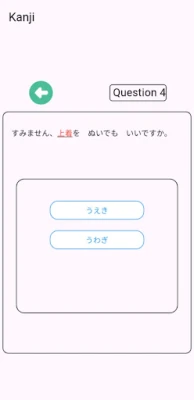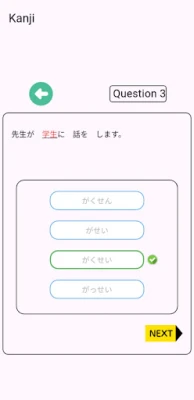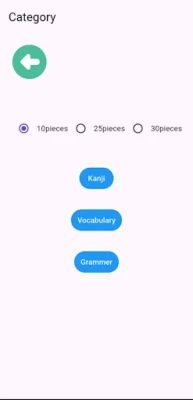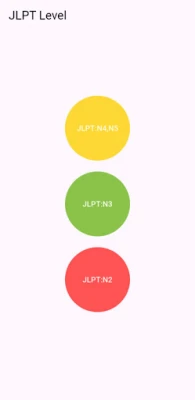
Latest Version
1.0.0
September 23, 2025
Undral Tugjargal
Education
Android
0
Free
com.bioadapt.kanjiapp
Report a Problem
More About JLPT test
Mastering Japanese Language Proficiency: From N5 to N2
Embarking on the journey to learn Japanese can be both exciting and challenging. The Japanese Language Proficiency Test (JLPT) is a standardized assessment that measures your proficiency in the language, ranging from N5, the most basic level, to N1, the most advanced. In this article, we will explore the significance of levels N5 to N2, the skills required at each level, and effective strategies to enhance your learning experience.
Understanding the JLPT Levels
The JLPT is divided into five levels, with N5 being the easiest and N1 the most difficult. Each level assesses different aspects of language proficiency, including vocabulary, grammar, reading comprehension, and listening skills. Here’s a brief overview of what to expect from levels N5 to N2:
- N5: This is the entry-level exam, designed for beginners. It tests basic understanding of Japanese, including simple phrases and everyday vocabulary.
- N4: At this level, learners should be able to understand basic Japanese used in everyday situations. It requires a broader vocabulary and a grasp of simple grammar.
- N3: This intermediate level indicates that the learner can understand Japanese used in everyday situations and some more complex topics. It bridges the gap between basic and advanced proficiency.
- N2: This level signifies a strong command of the language, allowing learners to understand and communicate effectively in a variety of contexts, including more complex discussions.
Skills Required for Each Level
To successfully pass each level of the JLPT, learners must develop specific skills:
N5 Skills
- Basic vocabulary (around 800 words)
- Simple kanji (approximately 100 characters)
- Understanding of basic grammar structures
- Ability to read and comprehend simple sentences
- Listening skills for basic conversations
N4 Skills
- Expanded vocabulary (around 1,500 words)
- Knowledge of more kanji (approximately 300 characters)
- Understanding of basic sentence structures and grammar
- Ability to read and comprehend short passages
- Listening skills for everyday conversations
N3 Skills
- Intermediate vocabulary (around 3,750 words)
- Knowledge of kanji (approximately 650 characters)
- Understanding of intermediate grammar and sentence structures
- Ability to read and comprehend longer texts
- Listening skills for more complex conversations
N2 Skills
- Advanced vocabulary (around 6,000 words)
- Knowledge of kanji (approximately 1,000 characters)
- Understanding of advanced grammar and nuances
- Ability to read and comprehend a variety of texts, including newspapers and literature
- Listening skills for understanding complex discussions and lectures
Effective Strategies for Learning Japanese
To progress through the levels of the JLPT, consider implementing the following strategies:
1. Set Clear Goals
Establish specific, measurable, achievable, relevant, and time-bound (SMART) goals for your language learning journey. This will help you stay focused and motivated.
2. Immerse Yourself in the Language
Surround yourself with Japanese as much as possible. Watch Japanese movies, listen to music, and engage with native speakers. This immersion will enhance your listening and speaking skills.
3. Utilize Language Learning Apps
Leverage technology by using language learning apps such as Duolingo, Anki, or Memrise. These tools can help reinforce vocabulary and grammar through interactive exercises.
4. Practice Reading and Writing
Read Japanese books, manga, or articles to improve your reading comprehension. Additionally, practice writing in Japanese to solidify your understanding of grammar and vocabulary.
5. Join a Study Group or Class
Collaborate with fellow learners by joining a study group or enrolling in a language class. This provides opportunities for practice and feedback from peers and instructors.
Conclusion
Achieving proficiency in Japanese from N5 to N2 requires dedication, practice, and the right strategies. By understanding the skills needed at each level and employing effective learning techniques, you can enhance your language abilities and prepare for success on the JLPT. Remember, consistency is key, and every step you take brings you closer to mastering the Japanese language.
Rate the App
User Reviews
Popular Apps










Editor's Choice































